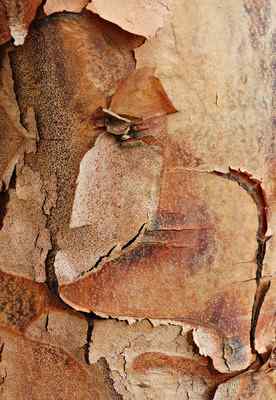- MENU
- HOME
- SEARCH
- WORLD
- MAIN
- AFRICA
- ASIA
- BALKANS
- EUROPE
- LATIN AMERICA
- MIDDLE EAST
- United Kingdom
- United States
- Argentina
- Australia
- Austria
- Benelux
- Brazil
- Canada
- China
- France
- Germany
- Greece
- Hungary
- India
- Indonesia
- Ireland
- Israel
- Italy
- Japan
- Korea
- Mexico
- New Zealand
- Pakistan
- Philippines
- Poland
- Russia
- South Africa
- Spain
- Taiwan
- Turkey
- USA
- BUSINESS
- WEALTH
- STOCKS
- TECH
- HEALTH
- LIFESTYLE
- ENTERTAINMENT
- SPORTS
- RSS
- iHaveNet.com: Home & Garden
Sean Conway

Its bark is the distinguishing feature of Acer griseum (paperbark maple). This ornamental tree is a standout in the yard or garden, especially during winter months when interest in the landscape is needed most
When choosing a new tree for their property, most homeowners think about showy foliage, colorful flowers or ability to produce abundant fruit.
Experienced gardeners, however, know there is another, often overlooked, attribute that can make some trees stand out in the crowd: bark.
In contrast to foliage and flowers, which are often seasonal, bark, especially exfoliating or patterned bark, is a feature that can be admired all year long.
Some of our native forest trees were named because of their distinctive bark. The flaky shagbark hickory, for instance, found growing in the woods of Indiana and Kentucky, and the pristine white paper birch found in Northern forests both got their names from their distinctive bark.
Many of these trees, however, will grow too large for the average homeowner to incorporate into their landscapes, but there are others with equally beautiful bark whose size is better suited to backyard living.
One such tree is Acer griseum, the beautiful paperbark maple. This slow-growing, oval-headed tree will eventually reach heights of 25 to 30 feet but will take its time doing so, making it well suited for the residential landscape.
While it may grow slowly, it begins showing its namesake feature at a young age. The beautiful cinnamon-colored, reddish-brown bark begins curling in horizontal sheets around the trunk when the tree is only a few years in age.
In the fall the leaves of this maple, like others in its family, turn beautiful shades of orange and red before falling off for the winter.
Acer griseum, like other maples prefers slightly acidic, moist soil that drains freely. It wants ample sun, but will tolerate light shade, and is hardy to zone 4.
Consider planting the paperbark maple in a spot where the trunk will be backlit by the sun. This will allow the peeling bark to glow and make the tree even more of a standout, especially during winter months when interest in the landscape is needed most.
Another beautiful small tree with interesting bark is Heptacodium miconioides, also known as "seven son flower." This large multi-stemmed shrub or small tree was introduced to this country from Asia in the mid-1980s. Reaching a height of about 20 to 25 feet, it's suitable for a shrub border, the edge of a woodland or as freestanding specimen.
In contrast to the maple's bark, which peels in horizontal curls, the seven son tree's medium-brown bark peels off in vertical strips revealing a beautiful silvery-gray new bark just underneath.
It may take several years before the bark begins to exfoliate, but it you remove one or two lower limbs each year from this fast growing plant you will end up with an exposed trunk that will make viewing the bark much easier.
In addition to it's attractive peeling bark, the seven son tree also produces an abundance of sweetly scented white flowers in the late summer or early fall. Flowers are produced in whorls, with each whorl producing seven flowers, for which the plant is named.
Heptacodium flowers are followed by seedheads that are even showier than the flowers. These half-inch purplish-red fruits have rose-colored calyces that last well into the fall.
The tree grows best in full sun and well-drained soil, but will also tolerate some shade. It is hardy in a large part of the country growing well in zones 5 through 9.
Avalable at Amazon.com:
Sean Conway's Cultivating Life: 125 Projects for Backyard Living
Ranches: Design Ideas for Renovating, Remodeling, and Building New
AUTOS | HOBBIES | EDUCATION | FAMILY | FASHION | FOOD & RECIPES | HOME DECOR | RELATIONSHIPS | PARENTING | PETS | TRAVEL | WOMEN
Trees with Beautiful Barks - Gardening
Article: Copyright © Tribune Media Services